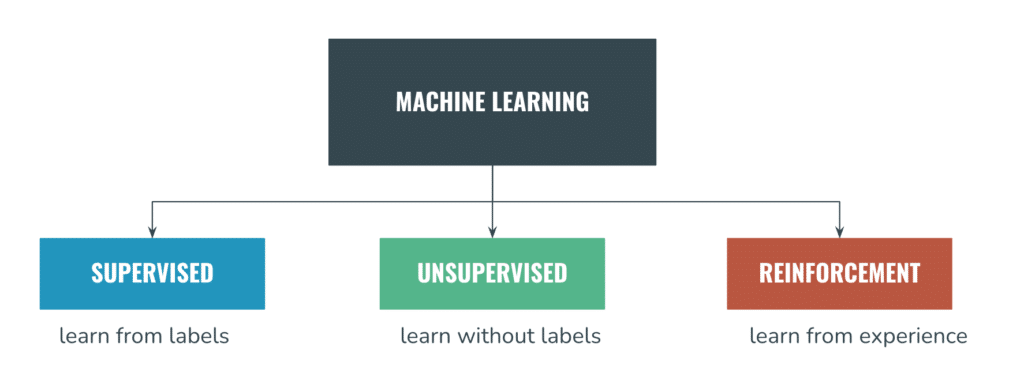AI Machine Learning: Optimize Best Exclusive Future of the Industries

AI Machine Learning are two of the most revolutionary technologies of our day. They have the potential to revolutionize various industries by providing unprecedented insights, automating complex processes, and then enhancing decision-making. AI, in essence, is the broader concept of machines being able to carry out tasks in a way that we would consider “smart”. Conversely, machine learning (ML) is a branch of artificial intelligence (AI) that uses statistical models and then algorithms to help machines perform better on a given task using data without having to be explicitly programmed.
The Core Components of AI Machine Learning

To understand how AI Machine Learning works, it is crucial to comprehend its core components:
Datasets: The foundation of ML is data. High-quality, relevant data is essential for training ML models.
Algorithms: These are the mathematical frameworks that process data to learn and then make predictions or decisions.
Models: A model is the result of an algorithm being trained on data. Based on fresh facts, it is capable of making judgments or forecasts.
Training: The process of feeding data to an algorithm and then allowing it to learn.
Evaluation: Assessing the performance of a model using various metrics to ensure it meets the required accuracy.
Types of Machine Learning

ML can be categorized into several types, each suited to different kinds of tasks:
Supervised Learning
A labeled dataset is used to train the model in supervised learning, meaning that every training example has an output label associated with it. The algorithm picks up the skill of mapping inputs to the right output. Common applications include:
Image Classification: Identifying objects in images.
Spam Detection: Determining whether an email is spam or not.
Speech Recognition: Converting audio speech into text.
Unsupervised Learning
Unsupervised learning involves training a model on data that does not have labeled responses. The system looks to the data to identify patterns and then structures.
Clustering: Grouping similar data points together (e.g., customer segmentation).
Anomaly Detection: Identifying outliers in data (e.g., fraud detection).
Association: Discovering rules that describe large portions of data (e.g., market basket analysis).
Reinforcement Learning
In reinforcement learning, an agent learns to make decisions by taking actions in an environment to maximize some notion of cumulative reward. It’s widely used in:
Robotics: For robot control.
Game Playing: Alpha Go by Google DeepMind.
Autonomous Vehicles: Self-driving cars navigating streets.
Applications of AI Machine Learning Across Industries
AI and ML are not confined to the realm of technology but have permeated numerous industries, bringing forth innovations and then efficiencies. Here are some significant applications:
Healthcare
Predictive Analytics: Using patient data to predict disease outbreaks and then individual health risks.
Medical Imaging: Enhancing the accuracy of diagnoses through advanced image recognition.
Drug Discovery: Accelerating the process of finding new drugs by predicting molecular behavior.
Finance
Algorithmic Trading: Implementing ML algorithms to optimize stock trading decisions.
Risk Management: Identifying and then mitigating financial risks through predictive models.
Fraud Detection: Fraudulent activity identification and then prevention in real-time.
Retail
Customer Personalization: Tailoring product recommendations based on customer behavior.
Inventory Management: Predicting stock levels and then optimizing inventory.
Price Optimization: Setting dynamic pricing based on market demand and then competition.
Manufacturing
Predictive Maintenance: Anticipating equipment failures before they occur.
Quality Control: Automating the inspection process with high precision.
Supply Chain Optimization: Enhancing logistics through predictive analytics.
Transportation
Route Optimization: Using ML to find the most efficient routes.
Autonomous Driving: Developing self-driving car technologies.
Demand Prediction: Forecasting public transportation needs.
The Future of AI Machine Learning

The future of AI and ML holds immense potential and promises to drive further innovation across various sectors. Key trends to watch include:
AI Machine Learning
As AI systems become more complex, there’s a growing need for explainability to understand how decisions are made. Explainable AI aims to make AI decision-making more transparent and then interpretable.
Edge Computing
Edge computing is transforming the way we handle data, especially in the realm of artificial intelligence (AI). By moving AI processing closer to the data source—be it autonomous vehicles, IoT devices, or industrial machinery—edge computing significantly reduces latency and then enhances efficiency. This proximity to the data source is crucial for real-time applications where milliseconds can make a difference.
AI Ethics and Governance
As AI systems become increasingly integrated into our daily lives, ensuring their responsible and ethical use has never been more critical. AI ethics and then governance address pressing issues such as bias, privacy, and job displacement, aiming to create systems that are fair, transparent, and accountable.
Bias in AI can lead to discriminatory outcomes, affecting everything from hiring practices to law enforcement. To combat this, it is essential to develop algorithms that are not only accurate but also fair and unbiased. Privacy is another major concern, as AI systems often require vast amounts of data, which can include sensitive personal information. Implementing robust data protection measures and ensuring transparency in data usage are vital steps in safeguarding user privacy.
Continual Learning
Continual learning represents a frontier in AI development, where systems are designed to learn and adapt continuously to new data. Unlike traditional AI models that rely on static datasets, continual learning mimics human learning processes, allowing AI to evolve and improve over time.
This capability is particularly valuable in dynamic environments where data is constantly changing. For instance, in cybersecurity, an AI system equipped with continual learning can adapt to new threats in real time, providing more robust protection. In healthcare, continual learning enables AI to incorporate the latest medical research and patient data, leading to more accurate diagnoses and personalized treatment plans.
Conclusion
AI and Machine Learning are revolutionizing the way we live and work, driving advancements across numerous industries. As these technologies continue to evolve, they will unlock new opportunities and transform our world in ways we can only begin to imagine.
Read more: Cybersafety Technology





